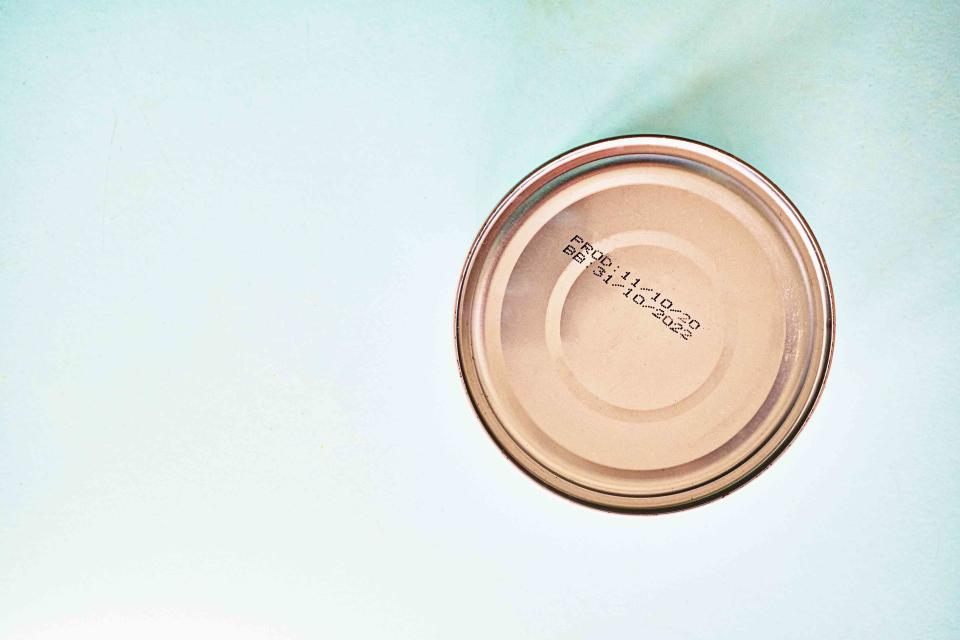What The Sell-By, Use-By, And Best-By Dates On Food Items Really Mean
Labels are important for making sure you don’t eat something too far past its point of freshness or safety.

Getty Images
If you’ve ever opened a carton of milk and given it the whiff test before pouring it over your favorite breakfast cereal, you’re probably already in the habit of checking to make sure your food hasn’t spoiled or gone bad before you start eating. Often, the dates imprinted at the top of the container can help, but it’s not a black and white situation.
You may, for example, realize you’ve passed the milk’s “use-by” date, but if you detect no signs of spoilage, there’s very little danger of the milk harming you. This is simply the date recommended to enjoy the item at its peak quality.
A great many food items are marked by what can seem like arbitrary dates—sell-by, use-by, best-by—and it can be hard to decipher what’s safe to eat and when. For example, if the jar of tomato sauce you’ve had in your pantry has a best-by date that just so happened to be, oh, eleven weeks ago, is it fine to eat? Will it be fresh tasting, and more important, is it safe to consume?
We’ve broken down these three date guidelines (and yes, they are technically guidelines as these labels aren’t regulated by the FDA), but rather are used by companies to help consumers know when the product should be consumed by.
What the Sell-By Date Means
The “sell-by” date is used by companies and manufacturers to move the product essentially. Grocery stores determine this date so they can manage their inventory and continue to keep products fresh for their customers. It has nothing to do with the product’s safety value.
This date is the recommended date the product should leave the store, but it doesn’t mean you must rush to get it home and consume it immediately. The item has a shelf life once it leaves the store, and we’ll get into that as we discuss the next two date labels: use-by and best-by.
Related: Can You Trust The "Sniff Test" On Leftovers?
What the Use-By Date Means
The use-by date refers to the quality of a product and is determined by the manufacturer. If the sour cream or yogurt in your fridge is past its use by date by a few days but it smells and looks fine—it’s most likely going to taste good too. If you see any mold starting to form, you should toss the product immediately.
It may be slightly past its peak, but, again, if it doesn’t smell funky or like it’s turned (and with dairy, you’ll know when the smell is off), it’s fine to use for another day or two. Extend it much longer than that or too many days past its use-by date, and that’s when the quality becomes questionable.
What the Best-By Date Means
The best-by date refers to the overall quality of the product. It means what it sounds like: X item will be best if consumed by the date on the label.
This one is a little more complicated though, as often, how we store certain items is related to how long they’re good for. Canned goods, including soups, beans, and sauces, may be consumed safely after their best-by date, especially if they’re stored in a cool pantry or cupboard. The best-by date is not the same as an expiration date, meaning the product hasn’t expired by the best-by date.
Research supports this understanding that best-by means the food item’s taste, texture, and appearance may be impacted after a certain date—not that the item is harmful or unsafe to eat.
Is It Safe to Eat Food Items After Their Best By and Use By date?
As explained above, it is generally safe to consume food items that have passed their best-by and use-by dates. It’s up to the individual consumer to make decisions on whether or not a food product is safe to eat. If it shows signs of spoilage, and this can occur even if it’s not past its best-by or use-by date, then you probably won’t be interested in eating it anyway. In other words, your nose and eyes will help you make the right decision.
For more Southern Living news, make sure to sign up for our newsletter!
Read the original article on Southern Living.

 Yahoo Autos
Yahoo Autos 